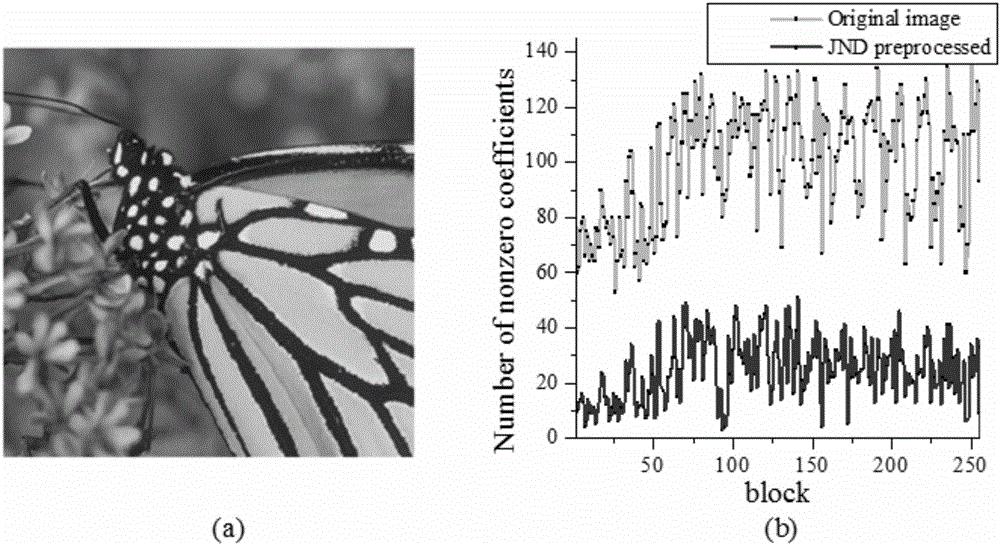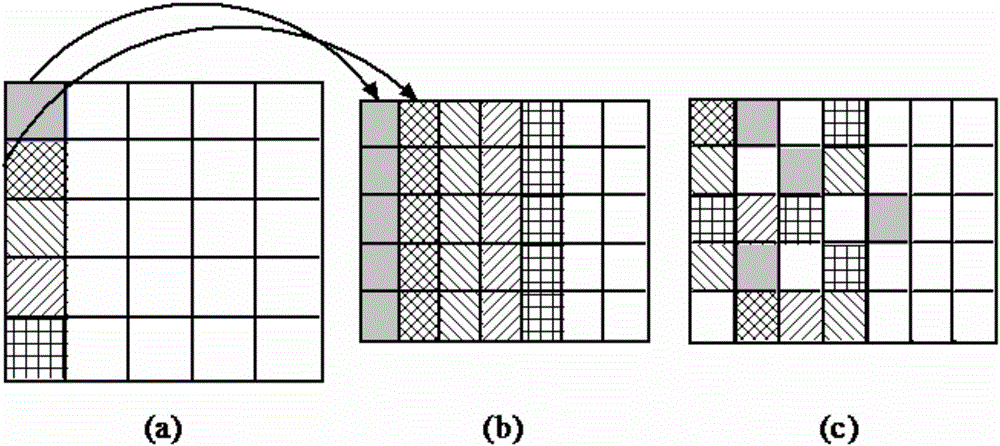Image compression sensing method based on perceptual and random displacement
A random permutation and image compression technology, applied in the field of image processing, can solve the problem of not considering human visual characteristics, and achieve the effect of removing visual redundancy, increasing sparsity, and improving sparsity.
- Summary
- Abstract
- Description
- Claims
- Application Information
AI Technical Summary
Problems solved by technology
Method used
Image
Examples
Embodiment Construction
[0025] Preferred embodiments of the present invention are described in detail as follows:
[0026] In this example, see Figures 1 to 4 , this embodiment utilizes the visual perception characteristic and the image compression method of the compressed sensing technology, and specifically adopts the following technical scheme, and the steps are as follows: figure 1 shown in the flowchart. The method of the present invention is implemented by programming on the matlab2014a platform. First, the image is subjected to block DCT transformation, and then the JND model of the DCT domain is established, and the DCT coefficients are preprocessed by using this model, and then the processed data are randomly scrambled, and finally Complete random measurements. At the decoding end, the restoration and reconstruction of the image is achieved through the inverse process.
[0027] In this example, see Figures 1 to 4 , an image compressed sensing method based on perception and random permu...
PUM
 Login to View More
Login to View More Abstract
Description
Claims
Application Information
 Login to View More
Login to View More - R&D
- Intellectual Property
- Life Sciences
- Materials
- Tech Scout
- Unparalleled Data Quality
- Higher Quality Content
- 60% Fewer Hallucinations
Browse by: Latest US Patents, China's latest patents, Technical Efficacy Thesaurus, Application Domain, Technology Topic, Popular Technical Reports.
© 2025 PatSnap. All rights reserved.Legal|Privacy policy|Modern Slavery Act Transparency Statement|Sitemap|About US| Contact US: help@patsnap.com



